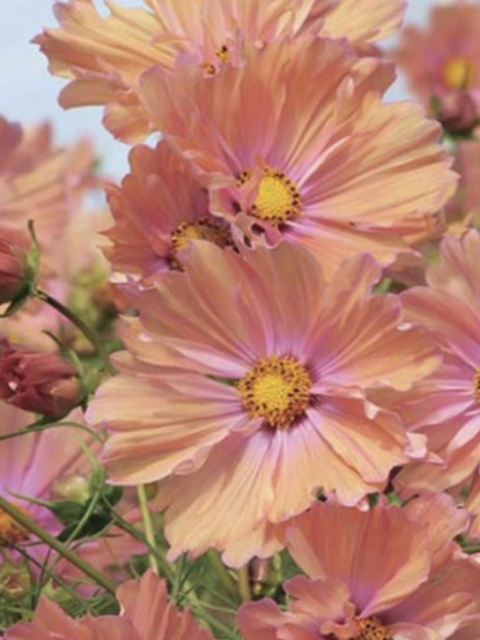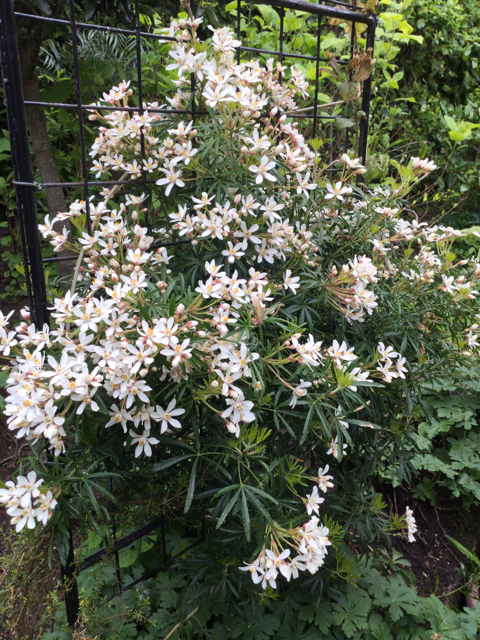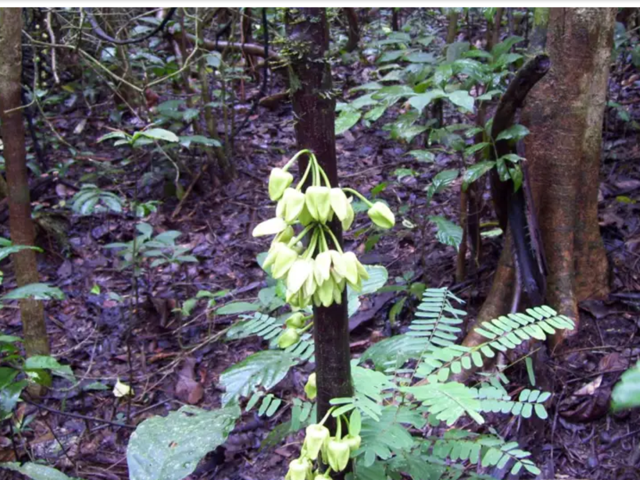May in our Gardens by Philippa Thomas

May is here with its abundance of flowers in bloom that are giving us a much needed boost. Our world feels like it is changing on a daily basis and sometimes, this can feel overwhelming. Certainly, nature and gardens have helped us to cope with this unprecedented situation, keeping our mind and soul balanced to take stock, adjust and heal. Aren’t Gardeners great people, very generously sharing seeds and cuttings and plants and then sometimes, their hard-earned knowledge and really, it’s not all about jobs to do: it’s simply about enjoying being outside. With these brighter evenings, why not sit back, relax, chill out and simply enjoy our gardens, listen to the birds, admire the structure and the colours of our flowers. Get up close and personal with our plants, maybe let’s see how many insects we can find. We can use our gardens to heal ourselves. Simple activities can often be the most rewarding. Flowers and herbs bring natural joy, they entice our senses with visual appeal, scent and touch. Deadheading and weeding are also immensely mindful garden tasks. Why not walk around our garden or balcony and pick a posy of fresh flowers, even a sprig of mint or rosemary can work wonders, …. bring our garden inside or gift it to someone who needs cheering up.

My very favourite Choisya, ‘White Dazzler’ It’s possibly, the tiniest species of Mexican Orange, evergreen and hardy. Its’ scent this AM, well I simply don’t have the adjectives to describe it… I have used it twice in this past week in order to decorate, sadly, two funeral wreaths.
Is there anything more calming and grounding than taking time out to listen to the exquisite harmony of birdsong? It is the kaleidoscope of sound, reminding us of what is important in life. Dawn and dusk offer two precious times of day in the garden when birds are particularly active. If we are early risers, maybe rather than switching on our laptops first thing, grab a cup of something and get ourselves outside. ‘As day breaks the birds will greet us with an orchestra of song, a roll calling, announcing the day, …. stop and listen. Close your eyes to fully absorb the honest sounds of nature and when the evening ebbs away, listen to the birds chatter and forage, watch them catch their last worm of the day, see their active social lives playing out before our eyes’.
The more plants our gardens hold the more insects make these habitats home. Warm sunny days provide the most insect activity. There is always some interesting behaviour occurring, even in the rain. Really, our gardens are bustling with insects from the smallest ants and spiders to butterflies, beetles, bees, dragon flies, all these have their essential role to play in this ecosystem of our gardens.
IMAGINE, PLANT NAMES TELL US THEIR COLOUR.
Alba / Albus, White.
Nigra, Black.
Argenta, Silver.
Aurum, Gold.
Rosea, Pink.
Purpurea, Purple.
Flavum, Yellow.
Viridis, Green.
Caerulea, Azur Blue.
Rubrum, Red.
Variegata, Variegated.
Glauca, Blue – Green.
SOME COMMON PLANT FAMILIES:
Contorts, Twisted.
Glabra, Shiny.
Striata, Streaks.
Zebrina, Striped.
Rotunda, Round.
Rotundifolia, Round Leaved.
Fastigiata, Tall Slender.
Horizontalis, Spreading.
Prostrata, Creeping.
Pendula, Weeping.
Pictus, Painted.
IS THIS NOT WONDERFUL NEWS?

Uvariopsis Dicaprio, Newly Identified Tropical Evergreen Tree Species Named In Honour Of Leonardo DiCaprio, An Environmentalist.
Botanical Gardens, Kew has released its list of imagine, 205 plants and fungi that were officially named as NEW to science in 2021. New to that list is Didymoplexis Stella Silvae, meaning Star of The Forest, a ghost orchid that grows in almost total darkness. There’s also a tropical pink voodoo lily found in The Cameroons threatened in The Ebo rainforest, (I lived close to there…., also spent time in The Sudan and South Africa…. What vastly different terrain in each zone….) Likewise there’s a new insect- trapping tobacco plant. The first named plant for 2022, Uvariopsis dicaprio, is a new tree from The Ylang-Ylang family, in honour of actor and environmentalist Leonardo Di Caprio. Dr. Martin Check, senior researcher in Kew’s Africa team says, “sadly several species on the 2021 list are already considered as under threat of extinction from increasing threats to their habitat and there are three, already believed to be extinct in the wild. This list is a last reminder that this is our last chance to find unknown species, name them and hopefully, protect them before they become globally extinct”.
Again, …. Rare Chequered Skipper Butterflies which died out 46 years ago due to changes to woodland management can be spotted again in The UK after being re-introduced. Finally, experts in Canada have found the UV patterns in sunflower blooms, which are invisible to the human eye, help the plant to regulate water loss. The UV pattern which forms a ‘bullseye’, only visible to insects, researchers have since found that plants grown in drier climates have larger bullseyes and are able to retain water more effectively.
Serious Thoughts To Dwell On:
RESEARCHERS AT THE UNIVERSITY OF READING HAVE DISCOVERED THAT AIR POLLUTION CONFUSES INSECTS SUCH AS BEES AND BUTTERFLIES AND LEAVES THEM UNABLE TO SNIFF THE PLANTS THAT THEY FEED ON. THE CHANGE OF FLORAL SCENTS CAUSED BY POLLUTION SIGNIFICANTLY REDUCED POLLINATION AND THE RESEARCH FOUND THERE WAS UP TO A 90% REDUCTION IN INDIVIDUAL FLOWER VISITS. OVERALL, POLLINATION SUCCESS WAS REDUCED BY UP TO 31%. THE FINDINGS COULD HAVE SIGNIFICANT IMPACTS FOR CROPS SUCH AS APPLES AND STRAWBERRIES.
It’s now time to bring our plants out from the greenhouse during the day and then, bring them inside once it becomes cooler in the evening. Hardening off, is ideal for most plants and when the time is right, nip out the growing points to produce a bushier plant, otherwise some plants, particularly petunias, fuchsias, and some verbenas, all grow leggy. Rainwater is the best water to use for all plants as tap water contains many chemicals, fluorides and salts which can be harmful to plants. Growing herbs from seed or small plants seems to last so much longer than supermarket versions.
I suppose, most of us are aware that in a small corner of Southeast UK, vast glass houses stand empty, – the soaring cost of energy prevents their owners from using heat to grow cucumbers. Elsewhere, growers have also failed to plant peppers, aubergines and tomatoes after a surge in natural gas price was accelerated by Russia’s invasion of Ukraine, making the crops economically unviable, global grain and edible oils are also under threat. Will this affect our supermarkets? It’s likely to push food prices higher. The growing of cucumbers is hugely affected. So why not grow our own in a greenhouse, a grow bag or even in a large pot?
What could be nicer than summer pots that overflow with scent and flowers. Remember The Golden Rule, ‘A Thriller, A Filler and A Spiller.’ We could line paths and steps carefully and table centres, with delicate varieties in small pots and then we can lighten up and brighten every corner of our gardens with shade tolerant container plants, too. Remember, no plant can survive without nutrients and when growing in pots, the compost and fertiliser have to provide all that the plants need. Keep a close eye on plants and liquid feed when growth starts to falter or the leaves start to look pale, best to feel the compost with our hands to ensure over or under-watering.
THIS ONCOMING, JOYFUL SUMMER.
This coming summer, why not create a buzz in our gardens and be a friend to pollinators. If we want to make our gardens a popular destination just let’s plant the flowers they love the best. Our gardens can provide safe havens for wild and domesticated bees. These pollinators need our help as they struggle to overcome habitat loss, pesticides, diseases and other environmental stresses.
Our late spring and summer continue to bring us a flurry of new plants. This year, there are several compact flowering varieties. Salvia, ‘A Little Bit’, is ideal for containers, then there’s a thornless carpet forming rose that can also be grown in pots.
There’s too, a pair of world firsts, ‘The Xanthe’ is the first large, flowered hanging basket chrysanthemum, it blooms in a range of colours and its stems make good cut flowers. ‘Electro Pink’ is the first dark-leaved cactus-flowered dahlia with spiky neon- pink flowers set against almost black stems and foliage and it’s claimed not to need staking.
Finally, my winner has to be Cosmos, ‘Bipinnatus Apricotta.’ It has beautiful shades of apricot with a hint of pink and a lovely soft pink centre. Its long stems are perfect for a bouquet

Cosmos Bipinnatus Apricotta,
Is a new Cosmos and is a real beauty.
The Annual Chelsea Flower Show is still some time away, May 24th- 28th. Competitors are beginning to create their own stories behind their gardens, – like how The Chelsea Flower Club will build a bridge with The Grenfell Tower Community, of The Grenfell Tower Fire Tragedy, etc.
Might Do, Maybe May Jobs
- The best time for us to water our plants liberally is first thing in the morning in order to avoid scorching their roots. Of course, we can also water in the evening although this can encourage slugs and snails.
- Mulch as deeply as we can with organic matter to maintain soil moisture. Mulching also works to prevent weeds by covering the soil with mulch, weed seeds struggle to come in contact with the soil, combined with their deprivation of light. Apply 2/ 3 inches of mulch and ensure the mulch is not placed too close to our plants.
- Many hold the theory, not to dig as digging the soil dries it out. Instead, let the worms do their job during our warmest months.
- Alyssum, Aubretia and Violas can all do with a short, back and sides chop to stop them getting straggly.
- The Chelsea Chop, timed to coincide with The Flower Show, will give us more flowers on shorter plants that are less in need of staking. Echinaceas, Sedums and Phloxes respond well to this.
- Tie in new growth on climbing roses while it is an easy job to handle.
- The best time to feed Camellias is right now after they have finished flowering. An ericaceous feed is advisable as yellowing of the leaves can be due to lack of iron or manganese.
- Tea bags and fresh tea leaves contain nutrients and tannic acid that when added to the soil, increase nutrient levels and improve soil quality as they decompose.
Some people look for a beautiful place, others make a place beautiful
Hazbat Inayat Khan.


